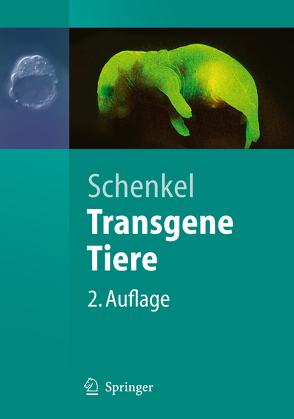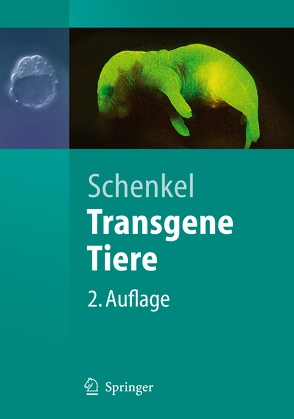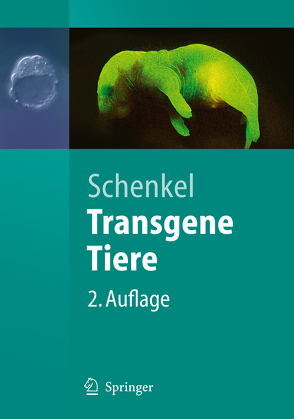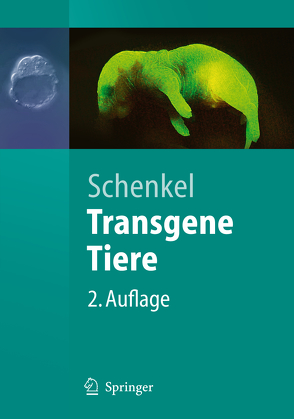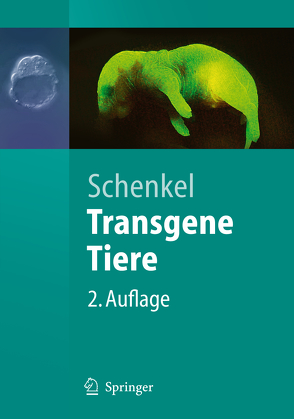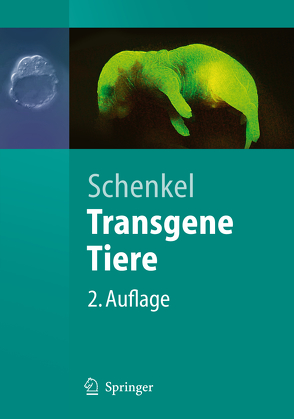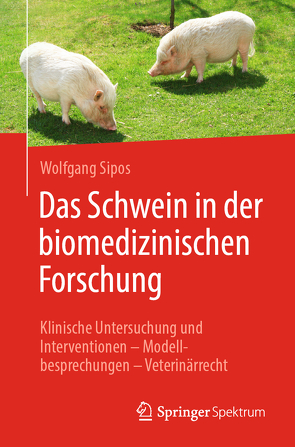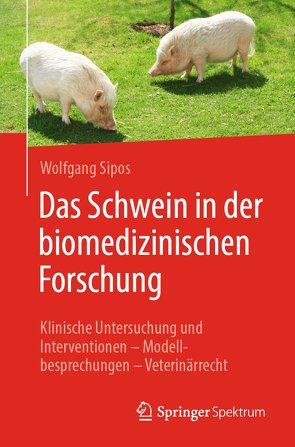Aktualisiert: 2023-07-02
> findR *
Aktualisiert: 2023-07-02
> findR *
Aktualisiert: 2023-07-02
> findR *
Aktualisiert: 2023-07-02
> findR *
Aktualisiert: 2023-07-02
> findR *
Aktualisiert: 2023-06-20
> findR *
Aktualisiert: 2023-06-20
> findR *
Aktualisiert: 2023-06-20
> findR *
Aktualisiert: 2023-06-20
> findR *
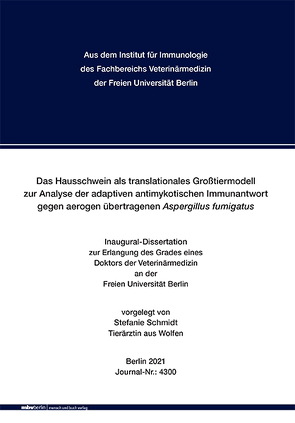
Aspergillus fumigatus (A. fumigatus) verursacht schwere invasive Infektionen oder auch Überempfindlichkeitsreaktionen bei immungeschwächten Menschen sowie Patienten, die an bereits bestehenden Lungenerkrankungen leiden. Die rechtzeitige Diagnose invasiver Pilzinfektionen ist nach wie vor schwierig, da spezifische und hochempfindliche nicht-invasive Methoden für A. fumigatus fehlen. Die Betrachtung der T-Helferzellantwort (CD4+) gegen spezifische Pilzpathogene kann dabei wichtige Informationen über den Wirt-Pathogen-Status liefern und diagnostisch für die Kategorisierung von Patientengruppen genutzt werden. Die Untersuchung der Rolle von Aspergillus-spezifischen Th-Zellen für die antimykotische Immunität des Menschen ist jedoch bei gefährdeten Patienten aufgrund der eingeschränkten Möglichkeiten zur Probenahme sowie des schnellen Fortschreitens der Erkrankung äußerst schwierig. In dieser Studie wurde das Hausschwein als translationales Großtiermodell ausgewählt, um die antimykotische T-Zell-Immunität gegenüber luftgetragenen A. fumigatus-Sporen unter Anwendung des Aktivierungsmarkers CD154 und der Anreicherung porziner Aspergillus-spezifischen T-Helferzellen zu untersuchen. Der Pool von A. fumigatus-reaktiven CD4+ T-Zellen im Blut gesunder, natürlich exponierter Schweine war bezüglich des Differenzierungsstatus, der Frequenz und des Th1-Phänotyps mit Daten gesunder Menschen vergleichbar. Gesunde Schweine, die in einer Aerosolkammer experimentell einer definierten Konzentration von 106 KBE/m3 Konidien über einen Zeitraum von 8 Stunden ausgesetzt waren, zeigten an Tag 4 nach der Exposition eine erhöhte Anzahl an Aspergillus-spezifischen Th-Zellen im Blut, gefolgt von einem Abfall und einem allmählichen Anstieg bis Tag 18. Nach der experimentellen Exposition akkumulierten A. fumigatus-reaktive CD4+ T-Zellen insbesondere in Lungengeweben und zeigten einen konsistenten Th1-Phänotyp. Experimentell exponierte Schweine entwickelten zudem keine klinischen Anzeichen einer Infektion. Eine temporäre medikamentös induzierte Immunsuppression vor der experimentellen Aspergillus-Exposition reduzierte die Anzahl der A. fumigatus-reaktiven Th-Zellen in Lungengeweben signifikant und resultierte in einer reduzierten Zytokinproduktion bis zu mehr als zwei Wochen nach Absetzen der supprimierenden Behandlung. Die initiale periphere A. fumigatus-reaktive T-Helferzellantwort im Blut war bemerkenswerterweise bei immunkompetenten sowie immunkompromittierten Schweinen sehr ähnlich. Darüber hinaus führte die experimentelle Exposition gegenüber Aspergillus-Konidien bereits nach 4 Tagen zu einem deutlichen Anstieg der pulmonalen Th17-Antwort mit Kreuzreaktivität gegenüber C. albicans. Die Ergebnisse unterstreichen daher den sinnvollen Einsatz von Hausschweinen zur Erforschung der A. fumigatus-reaktiven T-Helferzellantwort und bieten neue Anhaltspunkte zur Analyse prädisponierender Faktoren für Aspergillus-assoziierte Erkrankungen und des Potenzials der T-Zell-basierten Diagnostik und Therapie in Human- und Veterinärmedizin.
Aktualisiert: 2023-01-12
> findR *
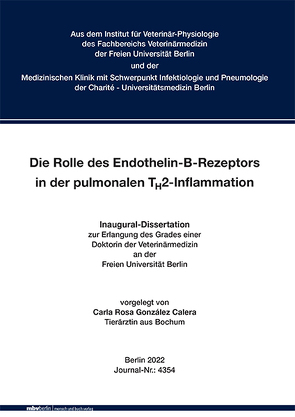
"The role of the endothelin B receptor in the pulmonary Th2 inflammation"
Pulmonary arterial hypertension is a rare, deadly disease, which is characterized by endothelial dysfunction, pulmonary vasoconstriction, pulmonary vascular hyperresponsiveness and pulmonary arterial remodeling. The endothelin system plays a crucial role in the pathogenesis of PAH. Hence, the aims of this study were to examine the role of the endothelin system in Th2-induced PAH-associated pathologies as well as agedependent endothelin-1-mediated alterations of the pulmonary vasculature. Pulmonary Th2 inflammation was induced in mice by systemic ovalbumin sensitization followed by ovalbumin airway exposure (OVA/OVA). Isolated perfused and ventilated lungs of transgenic mice were investigated to determine the effects of endothelin receptor B deficiency (ETB-/-) and human prepro-endothelin-1 overexpression (ETtg) on mean pulmonary arterial pressure and pulmonary vascular (hyper-) responsiveness. In addition, pulmonary collagen deposition and perivascular inflammation were examined by comparative histological analyses. Right ventricular hypertrophy was determined by Fulton index. Cytokine analyses of bronchoalveolar lavage fluid (BALF) and messenger ribonucleic acid analyses of lung homogenate allowed a specific characterization of the inflammation and regulatory mechanisms in the respective groups.
ETB-/- mice showed pulmonary hypertension, including pulmonary vascular hyperresponsiveness and right ventricular hypertrophy. Pulmonary vascular hyperresponsiveness and right ventricular hypertrophy aggravated following induction of pulmonary Th2 inflammation. OVA/OVA-treated ETB-/- mice showed markedly increased perivascular leukocyte infiltration, pulmonary endothelin-1 expression and BALF IL-12p40 levels in comparison to their corresponding wildtype animals. In addition, the endothelin-1-mediated pulmonary vascular release of thromboxane was distinctly augmented in ETB-/- mice. While prepro-endothelin-1 overexpression led to pulmonary vascular hyperresponsiveness in young ETtg animals, highly aged ETtg mice showed a fixed pulmonary hypertonus accompanied by right ventricular hypertrophy.
In summary, due to pulmonary Th2 inflammation, ETB deficiency led to an increased pulmonary leukocyte influx with markedly increased IL-12p40 levels and an enhanced expression of endothelin-1. These alterations as well as an increased pulmonary vascular release of thromboxane might have contributed to the increase in right ventricular hypertrophy and pulmonary vascular hyperresponsiveness, observed after OVA/OVA treatment. The results of this study support the hypothesis that endothelin receptor B plays a protective role in the pulmonary vascular system. Moreover, they show that endothelin-1 alone is sufficient to induce PAH-associated alterations in the heart and pulmonary circulation. Further studies, including separate and simultaneous inhibition of endothelin receptor A and/ or ETB, are needed to determine whether separate inhibition of endothelin receptor A could be superior to dual blockade of both endothelin receptors in PAH therapy.
Aktualisiert: 2023-02-16
> findR *
Aktualisiert: 2023-04-04
> findR *
Aktualisiert: 2023-04-01
> findR *
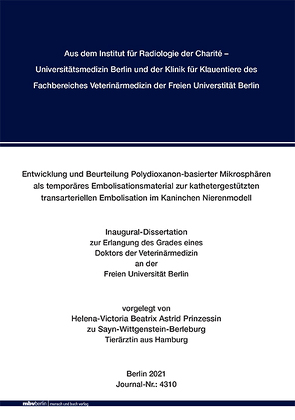
Development and evaluation of polydioxanone-based microspheres as temporary embolization material for transarterial embolization in a rabbit kidney model
The objective/aim of the present animal study was to investigate the in-vivo behavior of novel temporary embolization microspheres made of polydioxanone. It is a hypothesis-generating primary study in which the basic properties (feasibility, safety, efficacy, resorbability and biocompatibility) of the newly developed material were examined in a renal embolization model in 16 clinically healthy New Zealand White.
For this purpose, newly size-calibrated (100-150 μm and 90-315 μm) and biodegradable microspheres made of polydioxanone were developed. The selective unilateral embolization of the kidney poles was performed randomized and under fluoroscopic control. The effectiveness of the embolization was confirmed by means of digital subtraction angiography (DSA) and magnetic resonance imaging (MRI).
Three animals (group 0) were euthanized immediately after embolization in order to assess the acute behavior of the particles. The remaining 13 animals were subjected to control imaging (DSA and MRT) after 1, 4, 8, 12 or 16 weeks to assess resorbability and reperfusion. This was followed by euthanasia and laboratory processing of the target organs for the histopathological examination of the resorbability and biocompatibility of the microspheres.
Renal embolization with polydioxanone microspheres was safe to perform in all rabbits. The injection through conventional catheter systems was moderately easy. The embolization resulted in an effective vascular occlusion, which was confirmed by DSA and MRI as well as in histopathology. The DSA and MRT controls after 1, 4, 8, 12, or 16 weeks showed partial to complete reperfusion as an indication of resorbability of the microspheres. The histopathological examination confirmed the resorbability through a microscopically visible and progressive particle degradation over time. The degradation of the microspheres was accompanied by a mild to moderate inflammatory / foreign body reaction with no evidence of tissue intolerance.
In conclusion the novel temporary embolization microspheres made of polydioxanone are characterized by good applicability and safety in the rabbit kidney embolization model, as well as reliable efficacy, resorbability and biocompatibility. In order to enable clinical application, biochemical modifications to the particles with the aim of accelerated degradation behavior and improved injectability are necessary.
Aktualisiert: 2022-05-05
> findR *
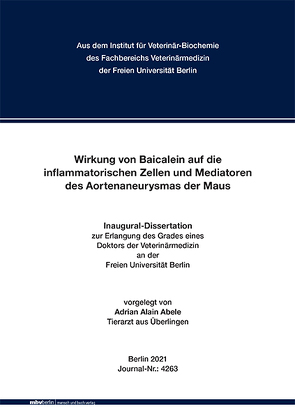
The effect of Baicalein on inflammatory cells and mediators in aortic aneurysm of mice
An abdominal aortic aneurysm (AAA) is defined as a pathological focal dilation of the abdominal aorta. Over 70 per cent of human patients die after a rupture of abdominal aortic aneurysm. This fact shows how important it is to explore the inflammatory development of aortic aneurysms. Nevertheless, the exact pathophysiological mechanisms are not revealed. The aim of this project was to investigate the effect of the anti-oxidative substance Baicalein on aortic aneurysm formation and the inflammation in a mouse model. Also the better understanding of the inflammatory pathway on development of aortic aneurysms should be explored.
The established Angiotensin II induced ApoE-/- -Mouse Model was used. During 4 weeks, 1500 ng/kg/min Angiotensin II was infused via an implanted osmotic pump (ALZET Modell 2004). Animals were classified in 4 groups. Group NaCl BAI- and NaCl BAI+ (n=10) had a saline infusion, Group Ang II BAI- and Ang II BAI+ (n= 30) were perfused with angiotensin II. The Groups NaCl BAI+ and Ang II BAI+ additionally received 1,5 mg/kg/day Baicalein via intraperitoneal injection. The aortic diameter, the peak systolic velocity and the mean velocity were measured weekly through the use of a duplex sonographer. After 4 weeks, the mice were sacrificed and the aortas were dissected. The aortas were stained with histological and immunohistochemical methods to locate the spread of immunological cells, apoptotic cells and the presence of inflammasome components in the aortic wall. Also the degeneration of the media (Grading 0-III) was staged via histological review.
There was no significant effect on mortality, diameter development and the incidence of aortic aneurysms with 30 percent in the verum-group in response to the injection of 1,5 mg/kg/day Baicalein. In addition, Baicalein treatment seems to be associated with the decrease of mortality and incidence of AAAs. Moreover, this dose did not change the presence and distribution patterns of inflammasoms in the aortic wall. Analyses of the medial degeneration seem to show a reduction through Baicalein.
The findings of this study in addition with the inhibition of AAA incidence and the decrease of AAA diameters of other investigations indicate that Baicalein might have an effect on the development of AAA.
Aktualisiert: 2022-05-05
> findR *
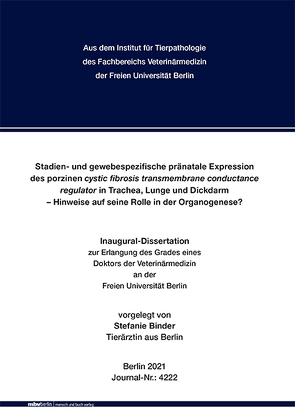
Zystische Fibrose (engl. cystic fibrosis, CF) entsteht durch Mutationen im cystic fibrosis transmembrane conductance regulator (CFTR) Gen, das für einen epithelialen Chloridionenkanal kodiert. Sie ist bis heute eine nicht vollständig verstandene, multisystemische Erkrankung, die zu Exokrinopathien in verschiedenen Organen führt. Trotz verbesserter Behandlungsmethoden versterben die Betroffenen heute durchschnittlich mit 50 Jahren größtenteils an progressiven Lungenentzündungen.
Schon bei der Geburt liegen strukturelle Veränderungen im Respirationstrakt vor, wie beispielsweise eine Deformation der Trachea und Wandverdickungen großer Bronchien, lange bevor sich eine Lungenentzündung entwickelt. Identische Malformationen fanden sich auch in CF-Schweinemodellen, bei denen porzines CFTR (pCFTR) durch genetisch Modifikation ausgeschaltet wurde. Die Bedeutung dieses angeborenen Phänotyps für die Pathogenese von CF ist noch unklar, jedoch lassen diese Beobachtungen eine Rolle von CFTR bereits in der pränatalen Organentwicklung vermuten. Bislang liegen allerdings nur wenige Daten hinsichtlich der pränatalen CFTR-Expression vor.
Zielsetzung der vorliegenden Arbeit war somit die Charakterisierung des stadien- und gewebeabhängigen Expressionsmusters von CFTR während der pränatalen Entwicklung im unteren Respirationstrakt und Dickdarm gesunder Wildtypschweine. Die Ergebnisse wurden mit bereits bekannten Erkenntnissen der pränatalen CFTR-Expression im Menschen verglichen. In die Analysen wurden Feten zu verschiedene Trächtigkeitszeitpunkten, neugeborene Ferkel und adulte Sauen eingeschlossen. Die gewebliche Expression von CFTR wurde auf mRNA-Ebene mittels Reverse Transkriptase quantitative Polymerase Kettenreaktion quantifiziert, das zelluläre Expressionsmuster mittels Immunhistochemie bestimmt. Des Weiteren wurde die gewebliche Expression des Natriumkanals pENaC, der ebenfalls eine Rolle in der Pathogenese von CF zu spielen scheint, sowie zelluläre Marker für Becherzellen (pCLCA1) und anderer Epithelzellen (pCLCA4a) analysiert.
Die Expression aller untersuchten Gene konnten mit einer Ausnahme auf mRNA-Ebene zu jedem untersuchten Zeitpunkt vom Ende des ersten Trimenon bis 24 Stunden postpartal und bei adulten Sauen nachgewiesen werden. Einzig im alveolarreichen Lungenhauptlappen konnte pCLCA4a im zweiten Trimenon nicht bei allen Feten nachgewiesen werden, was vermutlich mit einer zu geringen Expression zusammenhängt. Die Expressionsanalyse von pCFTR und pSCNN1B, das für pENaC kodiert, ließ, wie beim Menschen auch, markante Zeitpunkte erkennen. Beispielsweise zeigte sich eine erhöhte Expression von pCFTR und pSCNN1B im unteren Respirationstrakt und Dickdarm im zweiten Trimenon. Daneben fand sich eine auffällige Reduktion der Expression von pCFTR im alveolarreichen Hauptlappen und eine Erhöhung der Expression von pSCNN1B im bronchusreichen Lungenspitzenlappen zum Zeitpunkt der Geburt. Auch die mRNA der beiden analysierten Markergene pCLCA1 und pCLCA4a wurde vermehrt im zweiten Trimenon nachgewiesen, was wahrscheinlich mit der Differenzierung der einzelnen Zelltypen zu diesem Zeitpunkt zusammenhängt.
Mittels Immunhistochemie wurde pCFTR in epithelialen Zellen des Dickdarms zu jedem untersuchten Zeitpunkt nachgewiesen. In der Trachea konnte das pCFTR-Signal jedoch nur bei neugeborenen Ferkeln und adulten Sauen, nicht aber in pränatalen Stadien nachgewiesen werden. Dies ist möglicherweise auf die mangelnde Sensitivität des Antikörpers zurückzuführen.
Die pränatale pCFTR-Expression zeigte somit ein charakteristisches, zeitabhängiges und mit humanem CFTR vergleichbaren Expressionsmuster und war durch eine erhöhte Expression im 2. Trimenon im Respirationstrakt und im Dickdarm charakterisiert. Möglicherweise ist CFTR daher zu diesem spezifische Entwicklungszeitpunkt für die Organentwicklung relevant. Zukünftige Untersuchungen zu diesem Zeitpunkt sollten an CF-Schweinefeten durchgeführt werden, um mögliche Ursachen für die angeborene Organmalformationen zu identifizieren.
Aktualisiert: 2021-06-24
> findR *
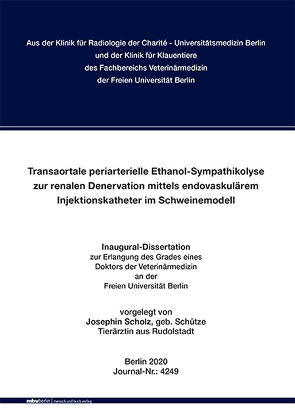
Bluthochdruckpatienten haben ein deutlich erhöhtes Risiko einen Schlaganfall oder Herzinfarkt zu erleiden. Aber auch andere Endorgane wie die Nieren oder die Augen können durch den langanhaltend erhöhten Blutdruck schwerwiegende Schäden davon tragen. Seit den 50er Jahren stehen als Therapie sehr potente orale Medikamente zur Verfügung. Jedoch sind bis zu einem Drittel der Menschen mit arterieller Hypertonie therapierefraktär. Für diese Patientengruppe ist es dringend notwendig, dass neue effektive und sichere Therapieansätze entwickelt werden. In den letzten Jahren hat man daher das Konzept der renalen Denervierung wieder entdeckt und mit den neuen minimalinvasiven Techniken weiterentwickelt. Sie basiert auf dem Hintergrundwissen, dass die sympathischen Nervenfasern, welche periarteriell in der Adventitia der Nierenarterie verlaufen, maßgeblich an der Regulation des Blutdrucks beteiligt sind. Diese so zu schädigen, dass sie ihre Funktion verlieren, ist das Ziel der renalen sympathischen Denervation. 2009 schien man mit der Einführung des Symplicity-Katheters dieses Ziel erreicht zu haben. Dieser Katheter wird über einen femoralen Zugang bis in die Nierenarterie vorgeschoben um mittels einer Elektrode punktuell Radiofrequenzenergie an das umliegende Gewebe abzugeben. So werden die dort verlaufenden Nerven durch die Wärmeentwicklung deaktiviert. Die Symplicity HTN-3-Studie, welche erstmals randomisiert und verblindet war, konnte keine überzeugenden Ergebnisse hinsichtlich der Effektivität des Verfahrens liefern. Daher folgten diverse Studien, um neue Methoden zur renalen Denervierung zu erproben. Neben den thermischen Verfahren wie die RFA oder HIFU, ist auch die Verwendung neurotoxischer Substanzen erfolgreich in präklinischen sowie klinischen Studien getestet worden.
Aus anatomischen Gründen sind jedoch nicht alle refraktären Hypertoniker für den Einsatz des Symplicity-Katheters geeignet. Die Nierenarterie muss für diesen Eingriff z. B. eine vorgeschriebene Größe und Länge aufweisen. Zudem sind auch bestimmte Vorerkrankungen der Nierenarterien ein Ausschlusskriterium. Um diese Limitationen der Nierenarterie zu umgehen und den potentiellen zukünftigen Patientenkreis zu erweitern, untersuchten wir in dieser Arbeit einen neuartigen Zugangsweg zur Applikation der neurotoxischen Substanz. Ziel dieser Arbeit war es die Machbarkeit der renalen Denervation mittels katheterbasierter transaortaler Ethanolapplikation im Schweinemodell zu evaluieren. Dafür wurden 11 normotensive Tiere in Allgemeinnarkose behandelt. Über die A. femoralis wurde unter Fluoroskopie ein Katheter mit steuerbarer Spitze und einer experimentellen ein- und ausfahrbaren Injektionsnadel bis in die Aorta vorgeführt. Nach Penetration der Aortenwand knapp oberhalb des Ostium renalis wurde ein Gemisch aus Kontrastmittel, Lokalanästhetikum und Ethanol injiziert. Die unbehandelte Seite diente als Kontrolle. Nach 4 Wochen Standzeit wurden die Tiere euthanasiert und der NA-Gehalt im Nierenparenchym gemessen, sowie die Nierenarterie und ihre umliegenden Strukturen histologisch untersucht. Außerdem wurde der Blutdruck unmittelbar vor und nach der Intervention sowie am Tag der Euthanasie nicht invasiv am narkotisierten Tier gemessen.
Zusammenfassend kann man sagen, dass das Verfahren bei 10 von 11 Tieren technisch durchführbar war. Ein Tier verstarb aufgrund von Kreislaufversagen in der Aufwachphase, was aber nicht in Verbindung mit der Intervention zu sehen ist. Bei einem anderen Tier kam es infolge einer versehentlichen intraarteriellen Ethanolinjektion zur Thrombosierung und Infarzierung der behandelten Niere. Bei 3 Schweinen ist das Injektat auch auf die kontralaterale Seite geflossen. Betrachtet man die technisch optimal durchgeführten Eingriffe, gab es einen messbaren NA-Abfall auf der behandelten Seite, jedoch war dieser nicht signifikant. Histologisch waren auf der behandelten Seite deutlich degenerierte Nerven nachweisbar. Der Blutdruck hat sich, wie bei einer einseitigen Denervation zu erwarten war, über die Zeit nicht verändert. Es sind weitere Studien nötig, um festzustellen ob die Ethanolinjektion über einen transaortalen Zugang eine Alternative zu der perkutanen oder transarteriellen Applikation darstellen kann.
Aktualisiert: 2021-11-11
> findR *
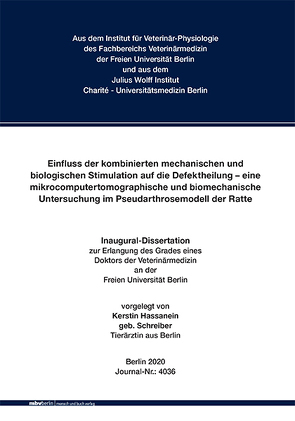
Influence of combined mechanical and biological stimulation on defect healing – a microcomputed tomographic and biomechanical study of critical-sized bone defects in rats
Generally it is known that the mechanical environment (stiffness of stabilization measures) is significant for the healing success of a fracture (Histings et al., 2010; Bartnikowski et al., 2017; Claes, 2017; Glatt et al., 2017). Under which biomechanical conditions a fast and efficient fracture healing would be achievable has been the subject of intensive research for some time (Claes, 2017).
Additionally, several studies have shown the positive effect of BMP-2 for bone healing (Nauth et al., 2011; Wildemann et al., 2011). Extended knowledge of the impact of the dosing of growth factors and how much their interaction with mechanical stress can influence the efficiency of bone regeneration show possible future strategies for cases in which a bony bridging of the fracture gap has not yet been achieved. (Schmidt-Bleek & Willie et al., 2016).
The aim of this work was to analyze the effects of varying fixation stiffness in combination with BMP-2 treatment in a critical sized defect (CSD) in a rat.
32 female Sprague Dawley rats, 12 weeks old, were randomized in four groups each of eight animals. Three experimental groups received a standardised critical 5 mm defect, 5μg rhBMP-2 was loaded on a absorbable collagen sponge and placed into the defect and stabilized with a flexible, semi-ride or rigide connecting element of the external fixator. The control group (1 mm osteotomy) mimicked an uncritical healing and was stabilized with the rigid fixator. All groups were analysed by in vivo micro-CT, perforrmed at day 10, 21 and 42 post-operation. At day 42 the rats were sacrificed and the osteomised left femora (including external fixator) were harvested. Additionally, the right intact femur of seven animals was harvested randomizedly. In the following, all samples were analysed by biomechanical in vitro testing for torsional stiffness and maximal torque value.
The initial healing process of the stiffness groups was found with comparable tissue structure in the descriptive micro-CT. At day 10, in all stiffness groups moderate bone formation was detected along the periosteal defect site that was not sufficient for defect bridging. However, among the other stiffness groups, upon semi-rigid fixation, a tendency towards a higher level of mineralization was still found, which correlates with the largest statistically not significant TV-, BV- und TMC-values. Whereas the flexible group showed the lowest TV-value.
On day 21 defects were bridged with bone tissue in all stiffness groups. As a result of the beginning maturing process, the micro-CT showed reabsorption processes. Delayed healing was found upon flexible fixation towards the other stiffness groups. Also a defect site with calcified and mineralized callus was found.
On day 42, the flexible group showed significantly higher values for TV, BV, BV/TV and TMC, whereas the semi-rigid group showed the smallest of these values. This was seen by a defect site filled with mineralised callus upon flexible fixation, whereas the
other stiffness groups had already shown reabsorption processes with rebuilding of the medullary cavitiy. Regarding TMD, the semi-rigid group showed the highest value, while flexible group showed the lowest value, but without any significance. The rigid group and the semi-rigid group showed a reduction of the total volume (TV) and also lower BV- and TMC-values as the flexible group - but also a lower TMD-value as the semi-rigid group. This leads to the presumption of a delayed maturing process.
By using biomechanical in vitro tests, the semi-rigid group showed nearly equivalent results respective the torsional stiffness and the maximal torque at failure between the rigid and the flexible group.
This study has shown that the BMP-2-stimulated defect healing is mechano-sensitive. Although marginal statistically significant differences in biomechanical and micro-CT results have been found, an accelerated healing process has been demonstraded upon semi-rigide and rigide group contrary to the flexible fixation – indicating a delayed boost of bone formation, whereas other stiffness groups had already shown reabsorption processes with rebuilding of the medullary cavitiy. This leads to the insight that the modulation of the mechanical environment of the critical defect has an impact on the healing process, despite the same BMP-2-treatment.
Aktualisiert: 2021-04-16
> findR *
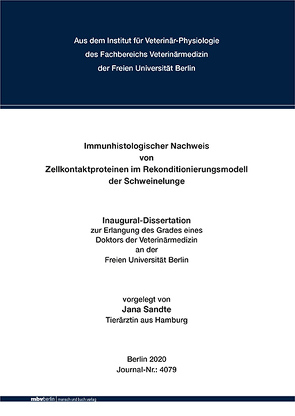
Lungs often have to be rejected from transplantation because they unfortunately include edema, atelectasis and immigrated inflammatory cells or pneumonia (van Raemdonck et al. 2009).
The in vitro reconditioning of lungs as a strategy to improve the mismatch between the need for donor lungs and the organs suitable for transplantation was pursued in a project to optimize a reperfusion model in lung transplants at the University Hospital Eppendorf in Hamburg. In this project, an ex vivo reconditioning system with a protocol for the reconditioning and an as optimal as possible reperfusion cycle was developed. The influence of the system structure and the perfusion solution as well as pulmonary damage by aspiration was also investigated (Wipper et al. 2007, 2008, 2009, 2010, 2011).
The aim of this research was to clarify the extent to which tight-junction, adherence junction and gap-junction proteins change due to the influence of reconditioning, the different system components and the damage of the lungs by aspiration and their different treatments. Additionally an investigation as to how clinical and histological parameters of the project and from this research correlate were conducted. There is already evidence that tight-junction proteins (reviewed by Cummins 2012), adherence binding proteins (De Boer et al. 2008), and gap-junction proteins (Sarieddine et al. 2009) play a role in lung disease.
To clarify this question, an immunofluorescence microscopic examination of the experimental groups of the project was carried out and the intensity of the fluorescence in the respiratory epithelium, endothelium and alveolar septa was evaluated.
As representatives of the tight-junction proteins Claudin-3, Claudin-4 and Claudin-5, Occludin and ZO-1 were selected. β-Catenin and E-Cadherin were studied as representatives of the adherence-binding proteins and Cx43 as representative of the gap-junction proteins.
The results of this study show that changes in the fluorescence intensity of the investigated proteins are observed, compared to healthy lung (prae-group); especially, in the endothelium and attenuated also in the alveolar septa in the aspiration groups of the project, in which also the clinically functional values and the LIS are changed. Claudin-5 and Occludin are reduced there, while Claudin-3 is increased. Cx43 is also elevated in these groups. Interestingly, in the aspiration group, where antithymocyte globulin was added in addition to the reconditioning and the intensive care measures, there are no changes in Claudin-5 and Cx43 and these values are consistent with the good clinical and histological values.
It is also noticeable in the respiratory epithelium that occludin is decreased in the investigated aspiration groups.
In the experimental groups of the closed system, there are hardly any changes in the fluorescence intensity compared to the prae-group. An exception is ß-Catenin, which is partially significantly reduced in the endothelium. However, ß-Catenin is reduced in all groups of the project.
When comparing the closed system with the open system (group 3, which was used as a control group of the aspirational experiments), for some proteins it is noticeable that the closed system is somewhat closer to the condition of the healthy lung. For occludin this is evident in all three localizations (endothelium, respiratory epithelium and alveolar septa) but also for Claudin-5 and Cx43 in the endothelium.
In summary, it can be said that the experimental influences of this project have a clear influence on tight-junction, adherence and gap-junction proteins. This shows that these proteins are involved in the mechanisms that underlie the (patho-) physiological changes.
Aktualisiert: 2022-12-31
> findR *

"Immunohistochemical and behavioral studies of postsynaptic serotonin1a receptor effects on adult neurogenesis"
With around 322 Million affected people worldwide and an increasing prevalence, depression is one of the most prevalent mental illnesses. The exact pathophysiological mechanisms of this disease have not been fully elucidated. In addition pharmacological therapy of depression comes along with a high non-responder rate and numerous adverse drug reactions. Further understanding of the etiology of depression is required to develop novel antidepressants with better efficacy and fewer adverse drug reactions. Studies of humans and animals suggest a dysregulation of the serotonergic system as well as alterations of adult neurogenesis in the development of depression. The 5-HT1A receptor, a subtype of the serotonin receptor family, was focussed in research and seems to play a significant role in the etiopathology of depression and the regulation of adult neurogenesis.
The 5-HT1A receptor is presynaptically located as an autoreceptor on serotonergic neurons in the raphe and postsynaptically as a heteroreceptor in the projection regions of serotonergic neurons such as the hippocampus. The well-established transgenic mouse model with an overexpression of postsynaptic 5-HT1A receptor (OE mouse) offers a good possibility to specifically investigate the effects of this receptor on adult neurogenesis, depression-like behavior, and hippocampus-dependent learning. Previous studies with OE mice indicate an antidepressant and proneurogenic effect of the postsynaptic 5-HT1A receptor. However, in these studies untreated or one-time treated mice were tested and, thus, compensatory mechanisms cannot be excluded. The present study aimed at analyzing the effects of chronic 5-HT1A receptor activation on adult neurogenesis, depression-like behavior and hippocampusdependent learning in OE mice compared to wildtype (WT) mice.
Furthermore, it is known that the serotonergic system is involved in the regulation of exerciseinduced adult neurogenesis. However, the proneurogenic effect in exercise-induced adult neurogenesis has not been related to any serotonin receptor-subtype yet. In this study, the involvement of the postsynaptic 5-HT1A receptor in exercise-induced adult neurogenesis was analyzed in the OE model. Both male and female mice were tested due to gender-specific differences in the prevalence and pathophysiology of the 5 HT1A receptor in depression as well as gender-specific differences in OE mice found in previous studies. After chronic 8-OH-DPAT or vehicle administration and in vivo labeling with BrdU, immunohistochemical studies for quantification of cell proliferation and survival in the dentate gyrus of male and female OE and WT mice were carried out. For analyzing exercise-induced adult neurogenesis a subgroup of both OE and WT mice had access or no access to a running wheel, respectively. Depression-like behavior of chronic 8-OH-DPAT or vehicle-treated OE and WT mice and untreated control animals was studied using the forced swim test and sucrose preference test. Differences in hippocampus-dependent learning of OE and WT animals were tested in the novel object recognition test and the novel object location test.
Voluntary wheel running was able to increase cell proliferation and survival in WT and OE mice. Considering the reduced distance traveled by OE mice, postsynaptically located 5-HT1A receptors are assumed to mediate a proliferative effect in exercise-induced adult neurogenesis.
Chronic 5-HT1A receptor activation did not result in increased cell proliferation or survival in either the transgenic mouse model or in WT animals. Female OE mice even showed a lower survival rate after chronic 5-HT1A receptor activation compared to WT animals and, correspondingly, depression-like behavior. The studies on hippocampus-dependent learning revealed no differences between OE and WT animals or the different treatment groups according to the results of cell survival. It is assumed that, in addition to 5-HT1A receptor desensitization after chronic receptor activation, mainly stress-causing factors such as injection and isolation were responsible for the present results. In conclusion, the results of our study, together with the results of a recent study on stress behavior of the OE mouse, indicate an increased stress sensitivity of the OE mouse. An interaction of sex hormones with postsynaptic 5-HT1A receptors as well as a decreased basal brain 5-HT concentration in female OE animals may result in a reduced cell survival rate and depression-like behavior of female OE animals following chronic 5-HT1A receptor activation. An analysis of stress response, the measurement of stress hormone concentrations such as corticosterone in blood and the determination of basal brain 5-HT concentrations in female transgenic mice are required to strengthen this assumption.
Aktualisiert: 2022-12-31
> findR *
MEHR ANZEIGEN
Bücher zum Thema Tiermodelle
Sie suchen ein Buch über Tiermodelle? Bei Buch findr finden Sie eine große Auswahl Bücher zum
Thema Tiermodelle. Entdecken Sie neue Bücher oder Klassiker für Sie selbst oder zum Verschenken. Buch findr
hat zahlreiche Bücher zum Thema Tiermodelle im Sortiment. Nehmen Sie sich Zeit zum Stöbern und finden Sie das
passende Buch für Ihr Lesevergnügen. Stöbern Sie durch unser Angebot und finden Sie aus unserer großen Auswahl das
Buch, das Ihnen zusagt. Bei Buch findr finden Sie Romane, Ratgeber, wissenschaftliche und populärwissenschaftliche
Bücher uvm. Bestellen Sie Ihr Buch zum Thema Tiermodelle einfach online und lassen Sie es sich bequem nach
Hause schicken. Wir wünschen Ihnen schöne und entspannte Lesemomente mit Ihrem Buch.
Tiermodelle - Große Auswahl Bücher bei Buch findr
Bei uns finden Sie Bücher beliebter Autoren, Neuerscheinungen, Bestseller genauso wie alte Schätze. Bücher zum
Thema Tiermodelle, die Ihre Fantasie anregen und Bücher, die Sie weiterbilden und Ihnen wissenschaftliche
Fakten vermitteln. Ganz nach Ihrem Geschmack ist das passende Buch für Sie dabei. Finden Sie eine große Auswahl
Bücher verschiedenster Genres, Verlage, Autoren bei Buchfindr:
Sie haben viele Möglichkeiten bei Buch findr die passenden Bücher für Ihr Lesevergnügen zu entdecken. Nutzen Sie
unsere Suchfunktionen, um zu stöbern und für Sie interessante Bücher in den unterschiedlichen Genres und Kategorien
zu finden. Unter Tiermodelle und weitere Themen und Kategorien finden Sie schnell und einfach eine Auflistung
thematisch passender Bücher. Probieren Sie es aus, legen Sie jetzt los! Ihrem Lesevergnügen steht nichts im Wege.
Nutzen Sie die Vorteile Ihre Bücher online zu kaufen und bekommen Sie die bestellten Bücher schnell und bequem
zugestellt. Nehmen Sie sich die Zeit, online die Bücher Ihrer Wahl anzulesen, Buchempfehlungen und Rezensionen zu
studieren, Informationen zu Autoren zu lesen. Viel Spaß beim Lesen wünscht Ihnen das Team von Buchfindr.


